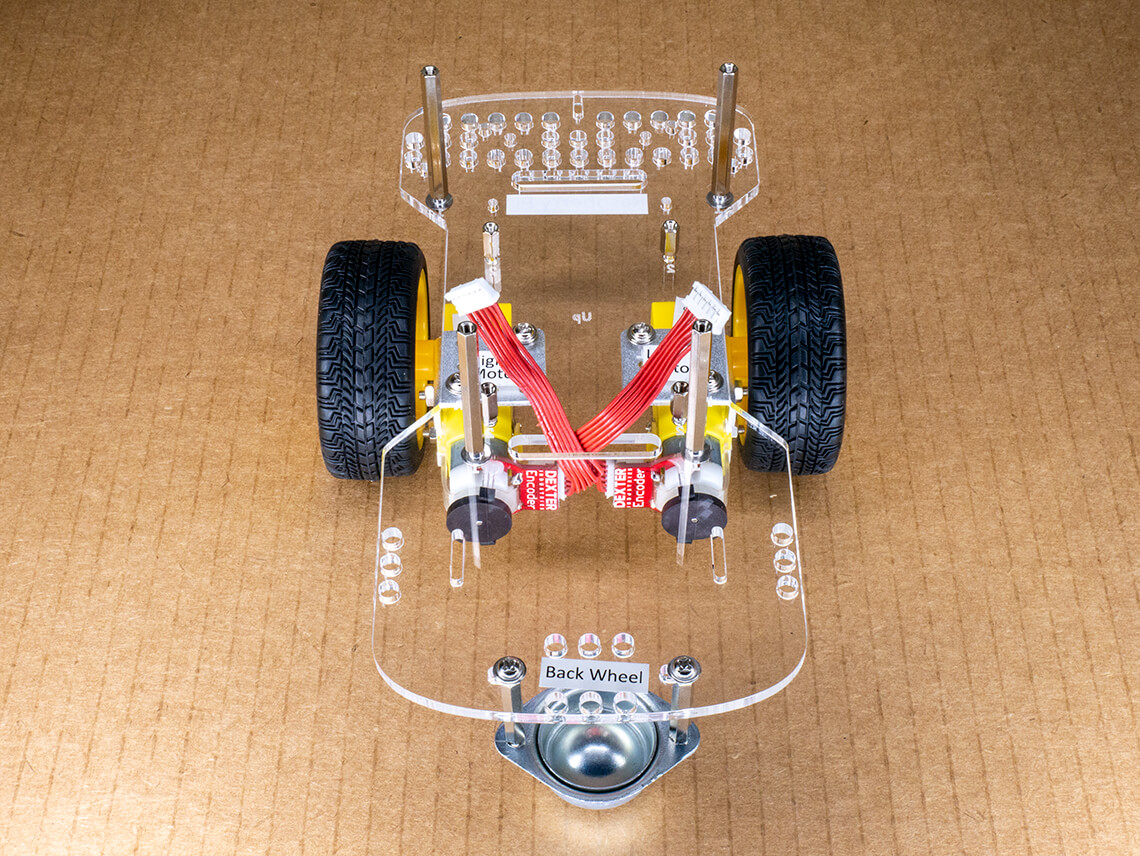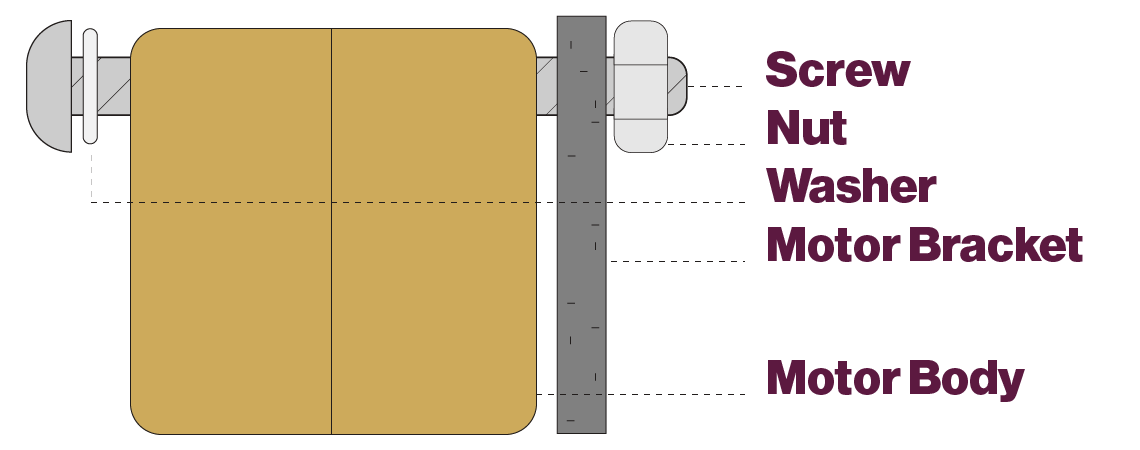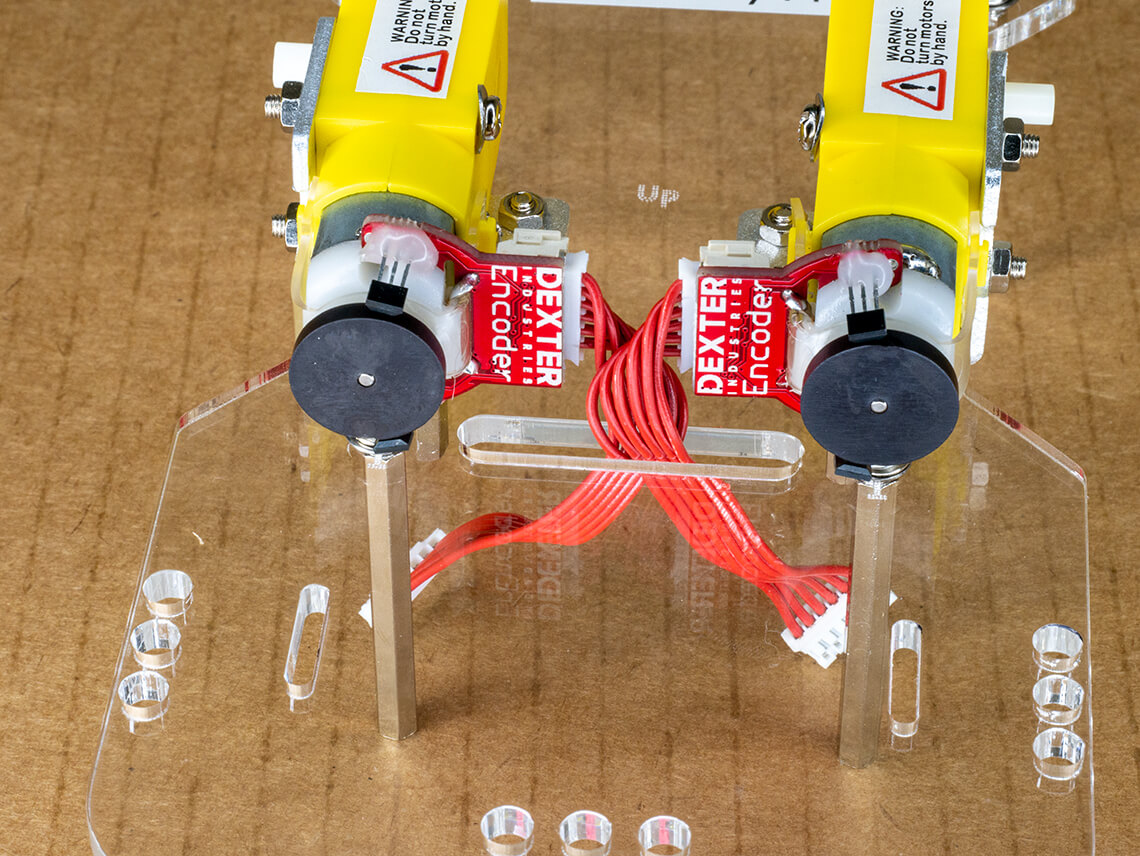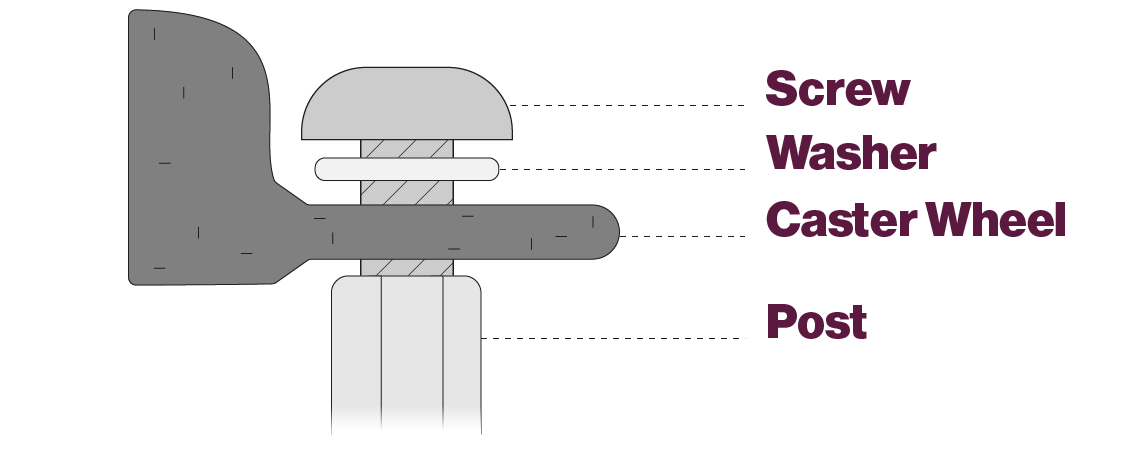Getting Started Guide

Attach the Wheels
Section Goal
In this section, you will attach the motors, caster wheel, and wheels to your robot.

Attach the Motors
Parts
- 2 Yellow Motors
- 2 Red Cables
From the Motor Hardware Bag:
- 4 Long Screws
- 4 Washers
- 4 Nuts
Steps
Attach the red cables to the yellow motors.
The cables will only attach in one orientation.
The GoPiGo is designed to be assembled and disassembled, so if you ever need to change the motors, you’ll be able to.

Put the washers on the screws.
Slide the long screws into the motors from the side where the wire is connected as shown in the picture.

Turn the acrylic body over so the metal motor brackets are pointing up and the acrylic is resting on your building surface.

Set each yellow motor inside a motor bracket.
The red wires should be facing inward, nearly touching each other.
The ends of the screws should fit through the motor bracket and extend beyond the edge of your robot.
To check your work, make sure the black circle encoders are facing the back of the robot.

Attach the nuts to the screws, tighten until the washers flatten.
Slide both motor cables through the acrylic board using the rectangular slot.

Attach the Caster Wheel
Parts
From the Caster Hardware Bag:
- 1 Caster Wheel
- 4 Short Screws
- 4 Washers
- 2 Medium Silver Posts
Steps
Place a washer on all four screws, and use two of them to screw the two medium silver posts into the caster wheel.
The posts should stick out the opposite side from the caster wheel itself.
Tighten until the washers are flat.

Flip the acrylic robot body so the yellow motors are touching your building surface. At the back of the acrylic, there are two short oval holes.
Slide the caster wheel underneath these holes so the wheel is touching your building surface.
Attach two screws from the top of the acrylic.
Tighten the screws until the washers are flat.

Attach the Wheels
Parts
From the Motor Hardware Bag:
- 2 Yellow Wheels
- 2 Small Acrylic Spacers
Steps

Slide the two acrylic spacers onto the white plastic axles on the motors.

Then, slide the two yellow wheels onto the axles of the motors.

